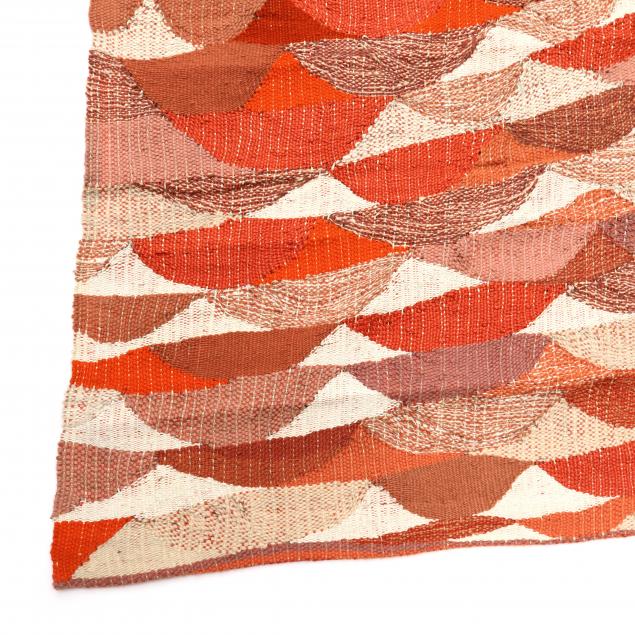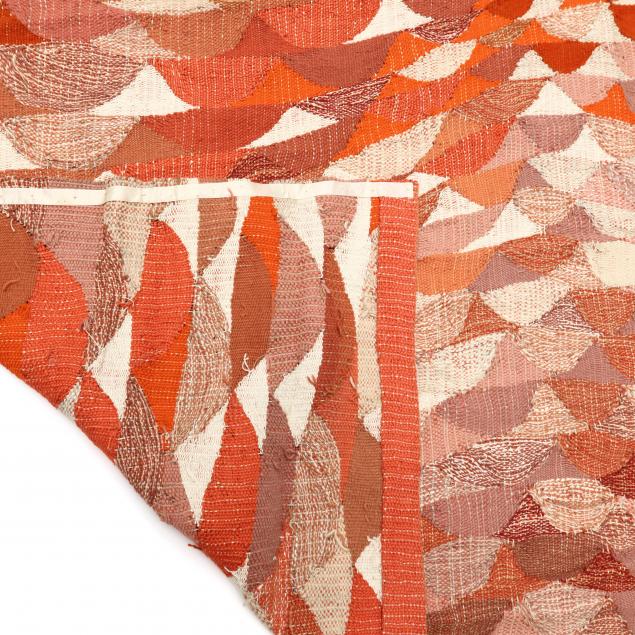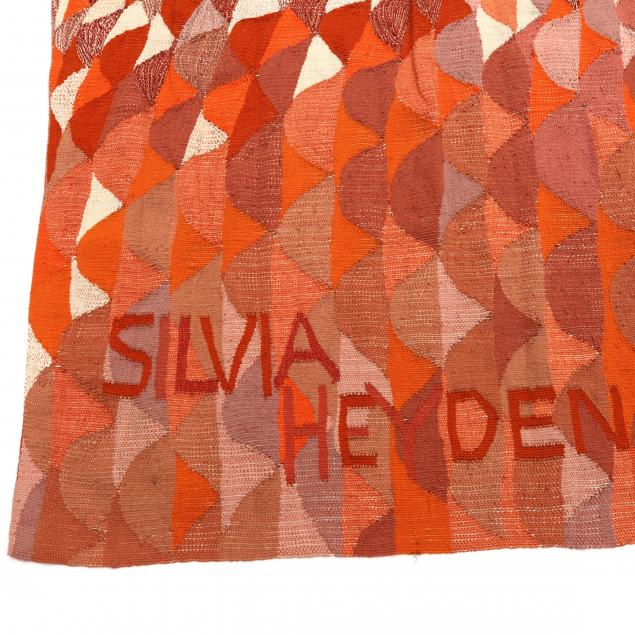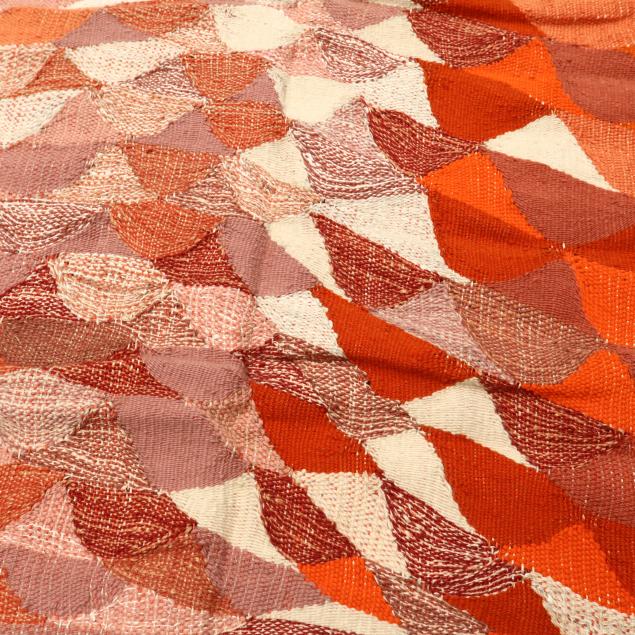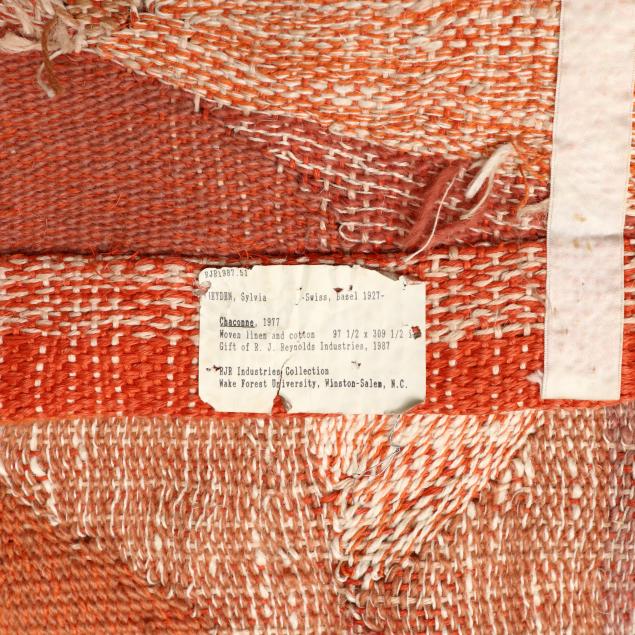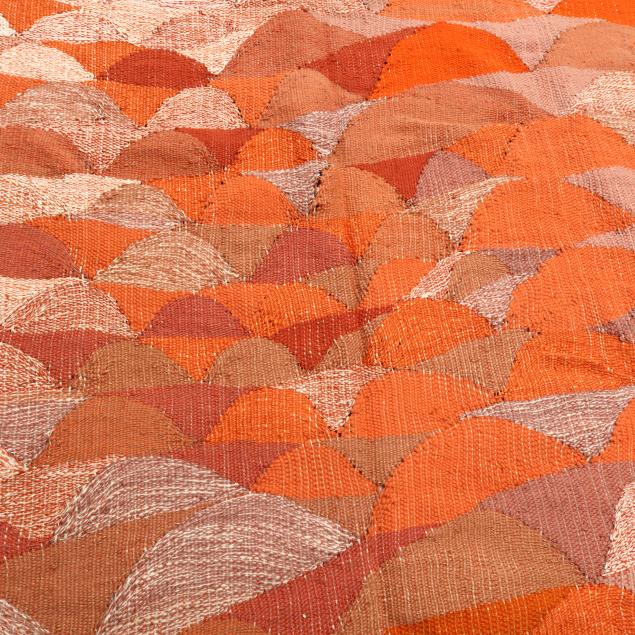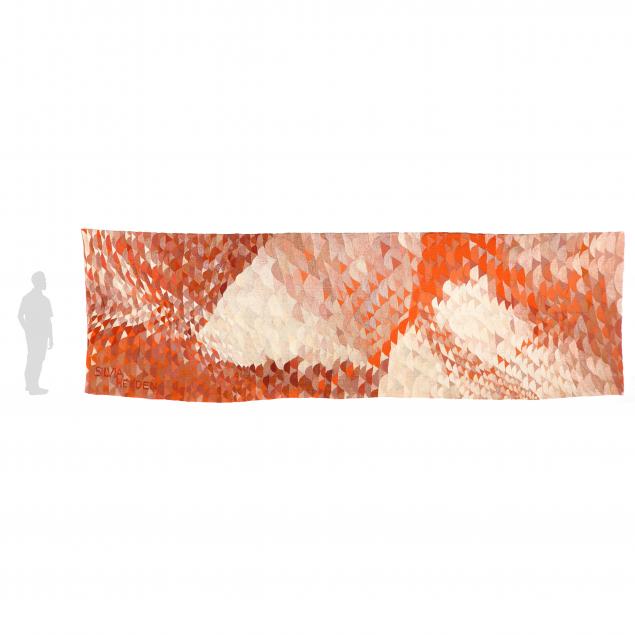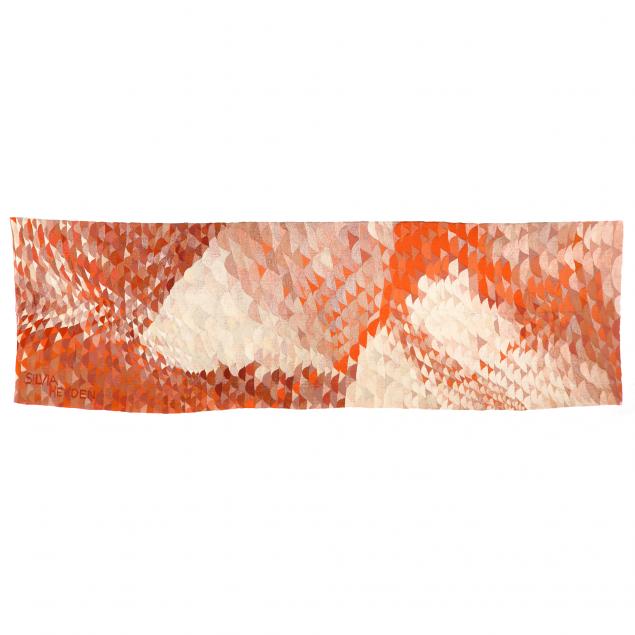
Lot 3140
Silvia Heyden (Swiss-American, 1927-2015), Chaconne, Massive Tapestry
Explore more items like this one.
Visit our Rugs & Textiles Department Rugs & Textiles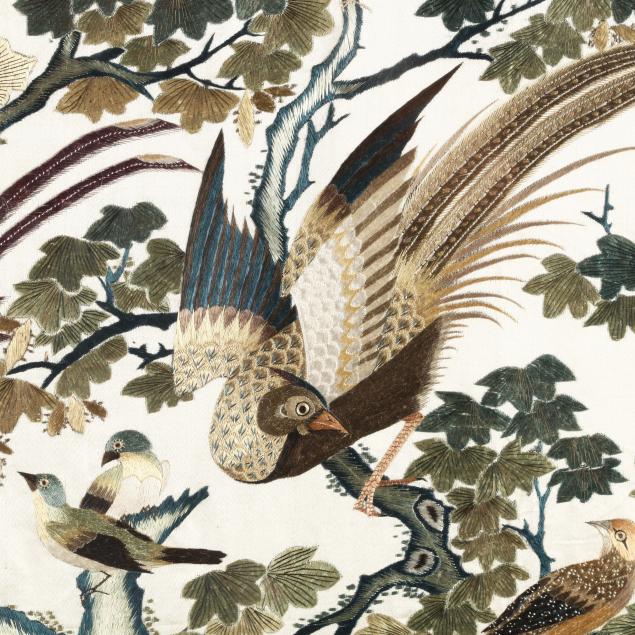
Lot Details & Additional Photographs
25 ft. 8 in. x 8 ft. 1 in.
Property of Wake Forest University, Winston-Salem, North Carolina, sold to support art collections care
Born in Basel, Switzerland, Heyden studied at the School of Arts in Zürich, where she built a strong foundation in color theory. She and her husband lived in many places, but considered Durham, North Carolina home.
The title of this work, Chaconne, refers to a musical format popularized in South America or Spain at the end of the sixteenth century. Its origins are that of a quick dance song, which inspired and became a favored format for Bach and other baroque composers.
Artist Statement:
"As I look back over my eighty years of sketching, seventy-five years of playing the violin and sixty years of weaving tapestries, I clearly see the confluence of strings in my work that has made musical themes of rhythm, motifs, movement, repetition and variation the key to my compositions. When I play my violin, I see the visual interpretation on the loom of musical pieces; when I am weaving, I listen to the inner rhythm of the forms and colors as my tapestry evolves. In my decades at the loom, I have never copied images, but rather have sought to let the patterns emerge organically as dictated by the process of weaving. Instead of superimposing a form to be woven on the weft, I have always looked with my ‘loomish’ eyes to see what the weft and warp would allow me to execute. As a result of experimenting with different techniques, I have over the years taken the basic elements of triangles, slits, and half-rounds to uncharted new territory, creating feathered weave, rounded slits, and sculpted bands. I aim to weave tapestries that are uniquely textile in nature and fully live up to the expressive potential of weaving, showing, for example, the texture of different colored threads in a way no painter could paint.
The impact of music on my tapestries can be seen in the dynamic tension built up and then released between forms and colors; in fact, many of my compositions follow the musical progression of allegro, largo, and vivace in a sonata, all while striving to keep the movement within the outline of the tapestry. My fingers improvise on the loom to bring out motifs and make them vibrate in the colors I combine before resolving the tension again. I am fascinated by the parallels between the strings of my violin and of my loom and often feel that after sixty years of exploration, I have only just begun to discover what is unique about weaving a tapestry."
(courtesy of the www.AmericanTapestryAlliance.org)
Light fading; else in good estate condition.
